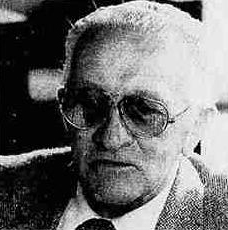
Achille Bonito Oliva is an Italian art critic and historian of contemporary art. Since 1968 he has taught history of contemporary art at La Sapienza, the university of Rome. He has written extensively on contemporary art and contemporary artists. He originated the term Transavanguardia to describe the new direction taken in the late 1970s by artists such as Sandro Chia, Francesco Clemente, Enzo Cucchi, Nicola De Maria, and Mimmo Paladino. He has organised or curated numerous contemporary art events and exhibitions; in 1993 he was artistic director of the Biennale di Venezia.

Arturo Martini (1889–1947) was a leading Italian sculptor between World War I and II. He moved between a very vigorous classicism and modernism. He was associated with public sculpture in fascist Italy, but later renounced his medium altogether.

Raffaele La Capria was an Italian novelist and screenwriter.

The Teatro Lirico is a theatre in Milan, Italy. In the 19th and early 20th centuries it hosted numerous opera performances, including the world premieres of Donizetti's L'elisir d'amore and Giordano's Fedora. The theatre, located on Via Rastrelli, closed in 1998. However, a restoration project was begun in April 2007, and it has finally re-opened in December 2021 as the Teatro Lirico Giorgio Gaber. Stage Entertainment carried on the renovation of the Theatre, completing all finishes and all workings started by the administration "Comune di Milano".

Giuseppe Pontiggia was an Italian writer and literary critic.

Alma Franca Maria Norsa, known professionally as Franca Valeri, was an Italian actress, playwright, screenwriter, author, and theatre director.

Clorinda Corradi was an Italian opera singer and one of the most famous contraltos in history.

Giovanni Raboni was an Italian poet, translator and literary critic.

Arnoldo Foà was an Italian actor, voice actor, theatre director, singer and writer. He appeared in more than 130 films between 1938 and 2014.

Luigi Augusto Fontanella is an Italian poet, critic, translator, playwright, and novelist.
Corrente di Vita was a biweekly Italian culture magazine published between 1938 and 1940.

Romeo Castellucci is an Italian theatre director, playwright, artist and designer. Since the 1980s he has been one part of the European theatrical avant-garde.

Giacomo Romano Davare is an Italian writer, actor, stage director and teacher.

Massimo Mila was an Italian musicologist, music critic, intellectual and anti-fascist.
Giampietro Pontiggia, also known by the pen name Giampiero Neri, was an Italian poet. He was noted for his novel style; his work is known for its concise, dry, and unembellished style, and veined with melancholy and humor. His work was often written in prose. He was part of the fourth generation of Lombard line.
Michele Sambin is an Italian theatre director and artist.
Corrado De Vita, was an Italian journalist and writer.

Enzo Moscato was an Italian writer, playwright and actor.
Elena Pontiggia is an Italian art critic and professor at Accademia di Belle Arti di Brera.













